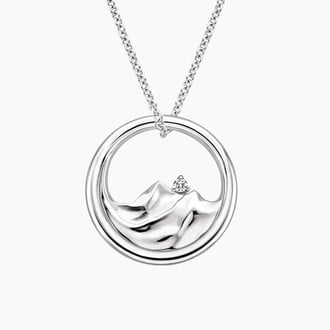There are a few ways to tell if jewelry has real diamonds. One of the most common methods is to perform a visual inspection using a jeweler's loupe or a magnifying glass. Real diamonds have unique physical properties, such as internal flaws and inclusions, that are visible under magnification. Look for small dark spots, clouds, or lines within the stone, which are indications of a natural diamond.
Another method is to use a diamond tester, which is a handheld device that can quickly detect the presence of a real diamond. Diamond testers work by measuring the electrical conductivity of the stone, which is different for diamonds and other materials like cubic zirconia or moissanite.
It's important to note that some fake diamonds can pass these tests, so it's always best to have your jewelry inspected by a professional jeweler before making a purchase. Additionally, reputable jewelers should provide certification for their diamonds, which includes information on the diamond's quality and authenticity. Learn more in our How Can You Tell if a Diamond is Real Guide.


































































